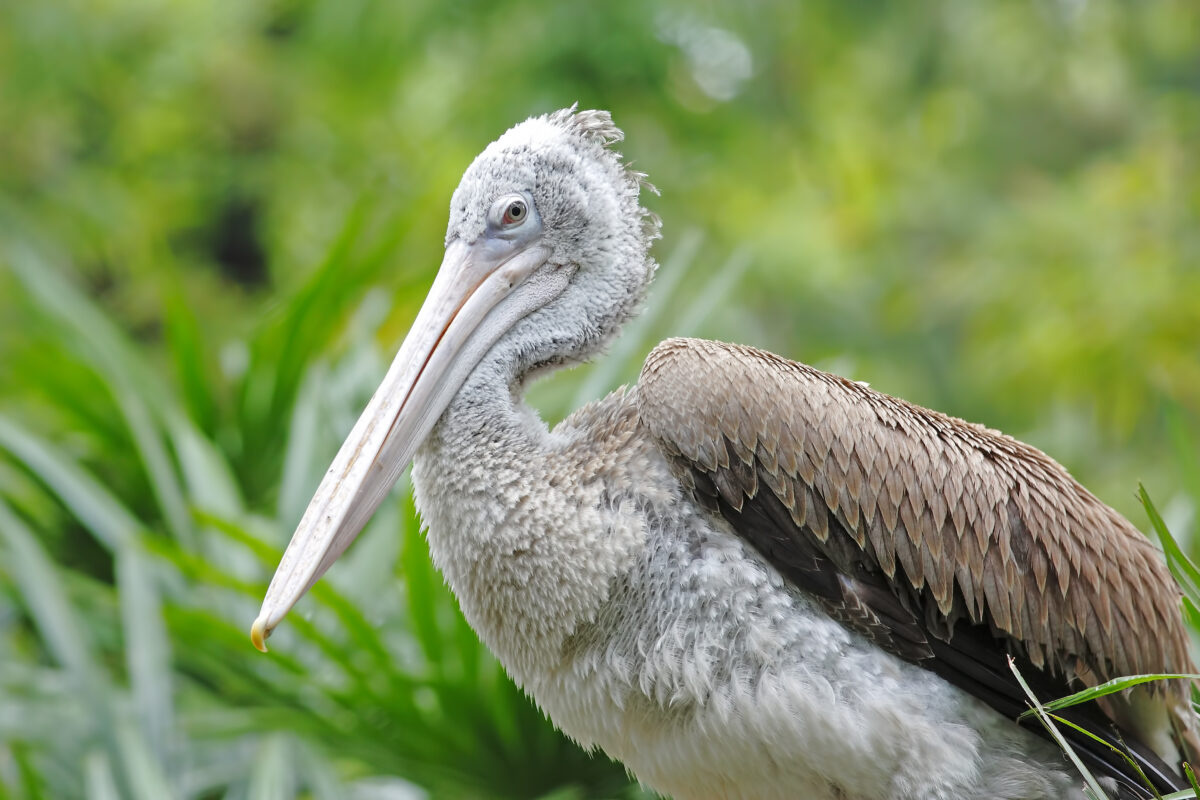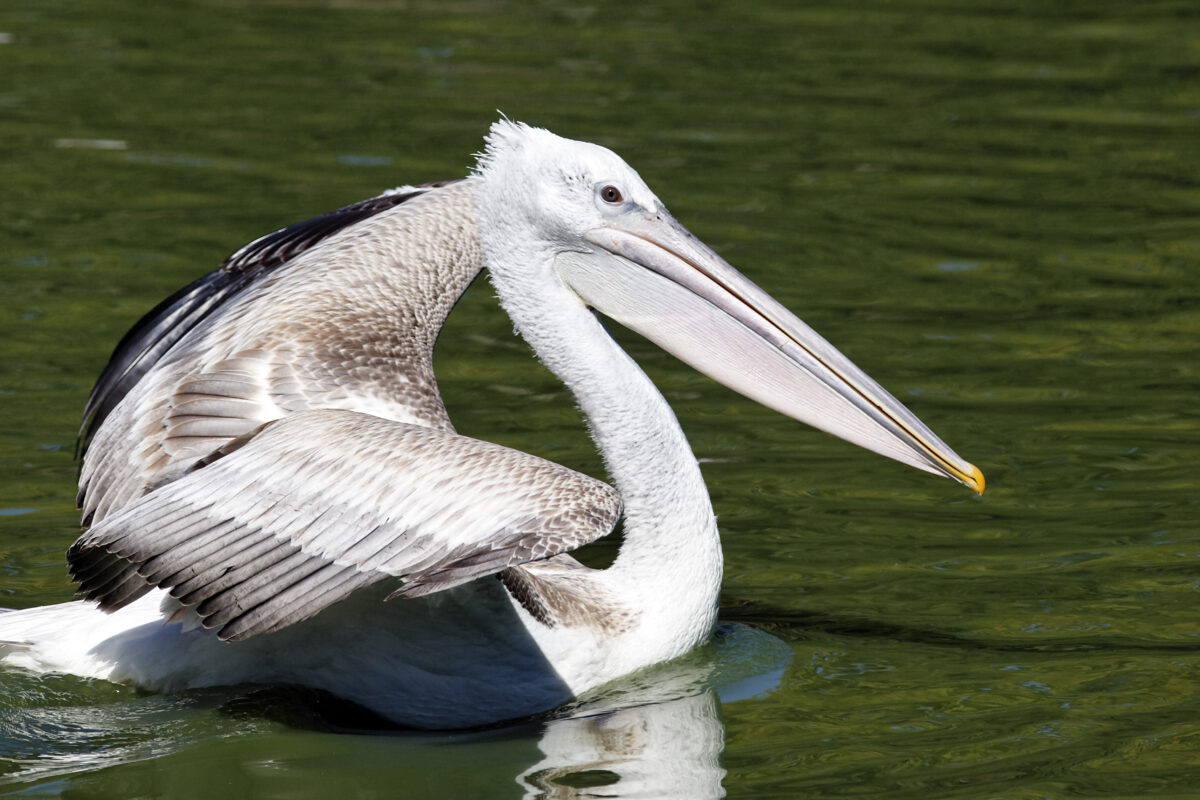The Spot-billed Pelican (Pelecanus philippensis) is a large waterbird native to southern Asia, recognized by the distinctive spots on its upper bill, a sizable throat pouch, and its preference for freshwater wetlands. Known for its graceful flight and group nesting habits, it plays a vital role in wetland ecosystems.


HabitatThey inhabits shallow freshwater lakes, rivers, and marshes across southern Asia. It prefers quiet, undisturbed wetlands with abundant fish and nearby tall trees for nesting. Its range includes India, Sri Lanka, Nepal, and parts of Southeast Asia, with populations concentrated in coastal and inland wetland regions. SizeThey are large birds, with a body length ranging from 125 to 152 cm (49 to 60 inches), a wingspan of 210 to 250 cm (6.9 to 8.2 feet), and a weight between 4 to 6 kg (8.8 to 13.2 lbs). While not the largest of pelicans, their impressive size and broad wings make them strong, efficient fliers, especially when soaring in formation. OffspringThey nest in large colonies, usually in tall trees near water, often alongside other waterbirds. Nests are stick platforms lined with soft materials. A typical clutch has 2 to 4 eggs, incubated by both parents for 30 to 33 days. The altricial chicks hatch helpless and depend on parental care until they fledge at around 10 to 12 weeks. BehaviorSpot-billed Pelicans are mainly solitary feeders, using their large throat pouch to scoop up fish and other aquatic prey while swimming. Unlike diving pelicans, they feed near the surface with stealth and precision. Outside the breeding season, they are quiet and often seen roosting or gliding over wetlands. DietTheir diet consists primarily of fish, but they also consume small amphibians and crustaceans when available. |










